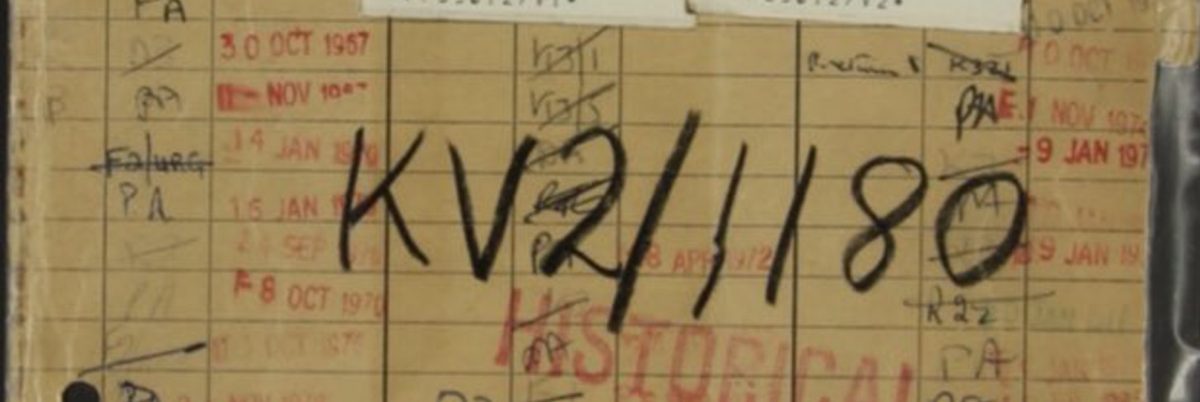
When I started looking into my family’s past I quickly realised I knew rather less than I thought I did. Consequently, I’ve read nothing but communist history for the past eighteenth months – each successive book (most of them red and with the obligatory hammer and sickle on the cover)- pushing me forward into new directions and new avenues to explore. A lot of the reading has been deathly but some of it has been a joy. Finding out that The Daily Worker used to carry a cartoon strip for children featuring the character of ‘Micky Mongrel the Class Conscious Dog’ for example, was a particular highlight.
“Child communist readers were treated to seeing ‘Micky’ in a variety of activist roles, whether ‘whitewashing’ communist political slogans, leafleting, picketing outside the dog biscuit factory, or fighting a range of class enemies that included the boss ‘Bertram the bulldog’, the reformist Labour leader ‘Lionel lapdog’, or the headmaster ‘Mr Mastiff’, who just happened to be very fond of wielding the cane.”
(Thomas Linehan, Communism in Britain 1920-39: From the Cradle to the Grave, MUP 2007- page 36)
I’ve found that you need to come across gems like this to keep you going when you’ve come across the phrase ‘dialectical materialism’ for the umpteenth time. However, although an understanding and knowledge of communism is vital to this project, it is first and foremost, a work of family history. In this respect, Alison Light’s Common People has proved to be an important and inspirational text. Light’s name cropped up a few times in the research I was doing. She’d edited Raphael Samuel’s posthumous ‘The Lost World of British Communism’ and provided a foreword for Yvonne Kapp’s autobiography and so that’s how I first came to this book which focuses on her own family story and reflects on the process of immersing yourself in the past. Prompted by the death of her father, it is her investigation into her ancestors starting with her grandparents. Beautifully written throughout it becomes a memorable evocation of the lives of working people over the last two centuries.
There are two moments I’d like to draw attention to and quote at length. Here’s the first:
“Secrets and lies are a staple ingredient of family history. Every family has its skeletons in the closet, its black sheep, the children born the wrong side of the blanket, the fortune swindled, the prison sentence hidden. The stories of poorer people and migrants are especially likely to unravel or be full of loose ends: disappearing husbands and wives, children left behind or brought up by relatives, relationships that were never officially registered, trails that go cold. As a ‘family detective’ the family historian expects to track down the facts about a person, follow the plot of a life and unveil the truth behind familial myths. In the record offices in Britain I got used to hearing other researchers relaying their family legends. In the cloakrooms or lobbies, over paper cups of vile instant coffee from the machines, another fevered searcher, high on an archive hit, would buttonhole me like the Ancient Mariner, and I would listen, slightly glazed to yet another astonishing revelation that meant so much to the teller and next to nothing to me.”
(Alison Light, Common People, Penguin 2015- page 128)
I recognise myself as the buttonholing researcher here- far too many times I’ve done the same thing over the last year and so I’d like to get my apologies in early. On this blog I hope the material we uncover will be of interest to as many people as possible but both my brother and I are aware that it could just be us two that find all this endlessly fascinating. However, if that is the case it’s still enough. The way each new discovery resonates and shifts our perspective is reward enough. As Light observes:
“Family historians are always stumbling over uncanny coincidences. Magical thinking is part of our stock in trade. The place once unbeknownst to us, or which we passed heedlessly every day, suddenly becomes luminous with significance, uniting disparate people and random moments, making them radiate and rhyme. Since family history moves in a psychological dimension, it is always plangent, resonating with loss, and coincidences are like ley lines mysteriously transforming the map of time. Such discoveries find pattern and meaning in what otherwise threatens to be mere accident, but they also seem to offer evidence of commonality. Family history knows that everyone- and everything- is ultimately, and intimately, connected. And there is truth in this.”
(Page 249)
My hope is that the articles we post here will ‘offer evidence of commonality’. That what is particular to our family history will resonate with others. After all, everyone and everything is connected.
Alan Stewart.
